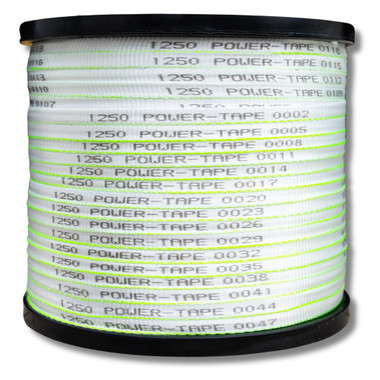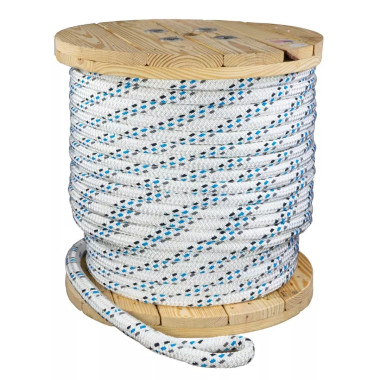How To Cut Rope, From Synthetic Rope To Natural Fiber Rope
Estimated 0 min read
If you’ve ever tried cutting rope with a dull blade or the wrong tool, you know the pain: frayed ends, lumpy melts or worst of all, a rope that looks like a squirrel chewed through it. Whether you're trimming paracord for a project, cutting a thick marine rope on the dock, or sizing natural jute rope for a craft, cutting rope properly matters. Clean cuts look professional, protect your rope from wear, and make splicing and knot-tying easier.
Today we’ll walk through how to cut rope, including how to cut synthetic rope, how to cut natural rope, and how to cut rope without fraying—whether it's nylon, polyester, paracord, cotton, jute, hemp, sisal, or double-braided marine rope. This is a real-world guide based on what actually works. Our team cuts a lot of rope! So let’s jump right in.
Why Cutting Rope Correctly Matters
You wouldn't cut electrical wire with scissors, right? Well, I hope you wouldn’t. Same logic here: rope is a tool, and treating it right means better performance and longer life. No matter what kind of rope you’re working with, a clean cut makes knotting and splicing easier, prevents fraying and premature breakdown, and keeps your rope looking neat.
And if you cut natural rope without sealing it, it’ll fray like crazy. If you cut synthetic rope and don’t melt it right, it’ll form hard blobs or unravel under load. Let’s learn how to keep your rope sharp and tidy.
Tools You’ll Need
Different ropes need different tools. Here’s what works and why.
The first thing you’ll want to do with any rope you plan to cut (synthetic or natural) is wrap it tight with electrical tape where you plan to cut it. This keeps the round shape and prevents the rope from fraying as you cut.
Synthetic Ropes like polyester, nylon, promanila, polypropylene, and combo blends are best cut with a hot knife. The hot knife seals the rope as it cuts, keeping your rope from fraying and making a clean melt-seal. We sell a handheld hot cutter on our site, but if you only plan on making a few cuts it’s probably not worth investing in. Other ways to melt a synthetic rope include pressing on a hot pan, skillet, or other piece of hot metal after cutting (be aware you may get synthetic material on your pan, and while this is generally considered safe if it’s cleaned off properly, it can ruin the coating on non-stick pans). You should always melt synthetic ropes in a well-ventilated area to avoid inhaling fumes.
If you aren’t going with a hot knife, many of the same tools can be used to cut synthetic or natural fiber ropes. Natural fibre rope like manila, sisal, or cotton can be easily cut with a large pair of loppers, a sharp knife, or with manila and sisal a hand saw will work.
After you cut you can leave the rope taped, or whip the end with twine or string if you prefer.
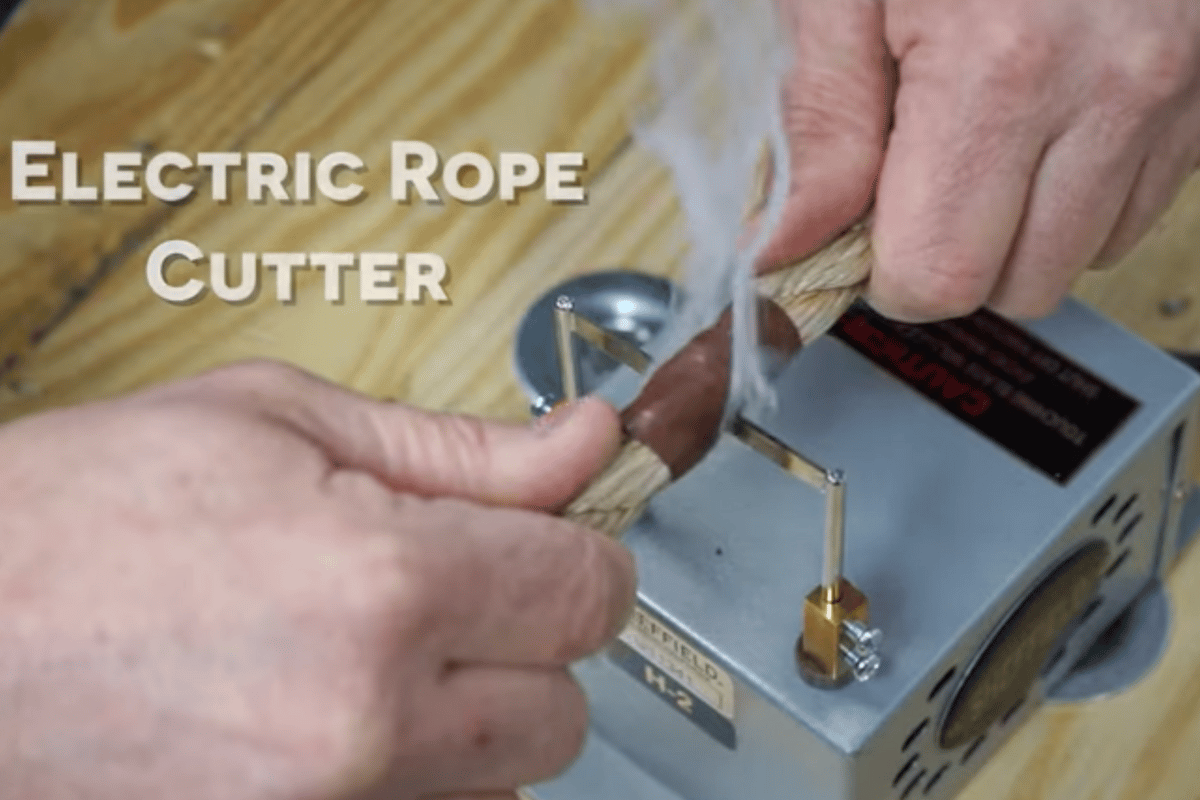
Best tools for cutting synthetic rope
- Hot knife (best for clean melt-seal)
- Shears, loppers, or a sharp knife
- Tape (to control fibers before cutting)
- Any hot metal surface, if hot knife is not available
Best tools for cutting natural rope
- Shears, loppers, a sharp knife, or a hand saw for manila and sisal
- Tape or whipping twine to bind ends
How To Cut Rope: General Method
No matter the material, start here.
- Measure and mark your cut. As the pros say, measure twice, cut once. You can always cut a little more off, but you can’t uncut a rope.
- Wrap the area tightly with tape (electrical tape works best for us). If you’re trying to be really precise you can remark your tape where you intend to cut. For most uses, centering your mark in the tape and eyeballing it will be close enough.
- Cut, using a sharp blade, loppers, or a heated cutter.
- Melt seal the ends if needed—synthetic rope only.
- Leave the tape, or whip the ends with twine.
Simple. Clean. No mystery.
Why Do You Melt Synthetic Ropes When You Cut Them?
When you cut synthetic rope like nylon, polyester, or paracord, you melt the ends to keep them from fraying. These ropes are made from plastic-based fibers, and when they're cut, the individual filaments want to unravel and separate. Melting the end fuses those fibers together into a single sealed tip, kind of like welding them. This works because synthetic ropes are essentially thermoplastics, meaning they soften and melt when heated.
A hot knife or contact with any hot metal surface will melt the outer fibers just enough to bond them, creating a clean, durable end that won’t come apart under use. Some people recommend using a lighter, and while that can work for thin paracord, it’s not a consistent enough heat source for an even melt on thicker ropes. Natural ropes don’t melt because they're made from plant fibers, not plastic, so they need whipping, taping, or glue instead.
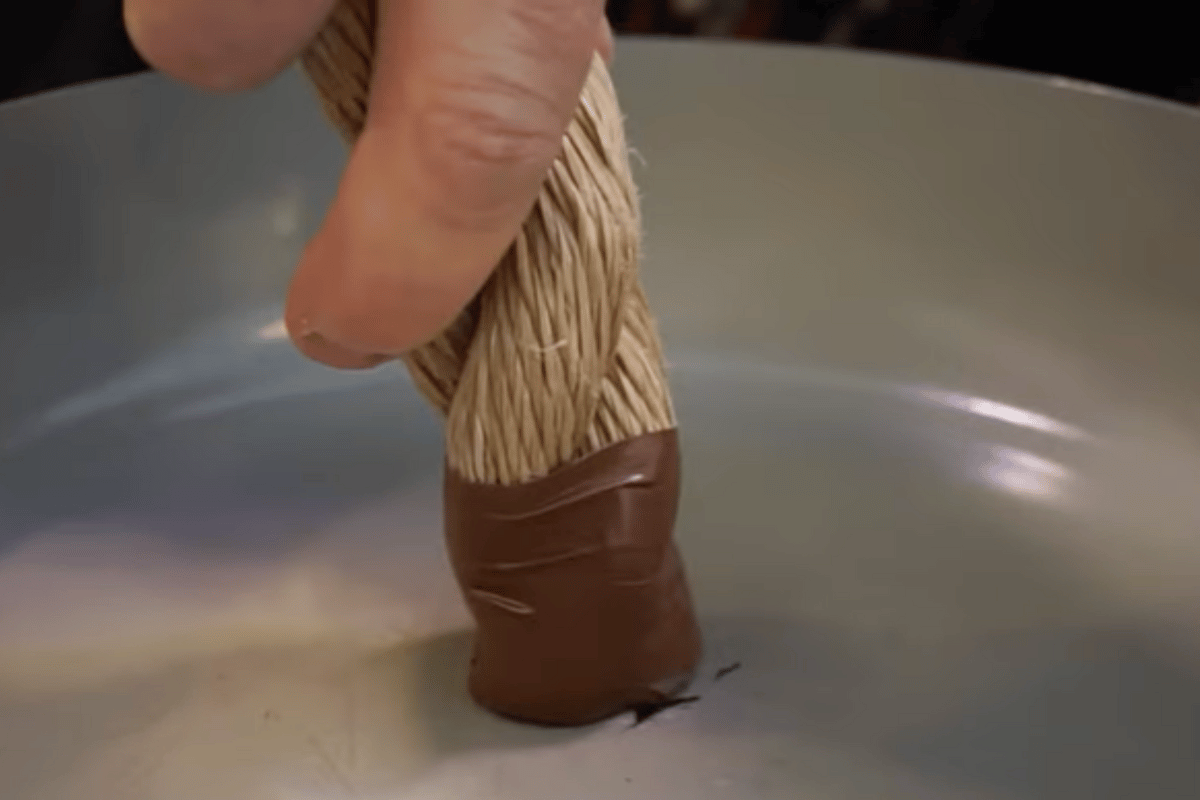
How Do You Whip A Rope End?
Whipping a rope end with twine is a classic and reliable way to keep natural fiber rope like manila, sisal, jute, or cotton from fraying after it's cut. Since natural rope can’t be melted like synthetic rope, a tight wrap of strong twine around the end locks the fibers in place mechanically. The process is simple once you see it done, and you don't need any fancy tools.
To whip a rope, start by laying a small loop of twine along the rope, with the loop pointing back toward the middle and the working end of the twine pointing toward the cut end. Begin wrapping tightly over both the rope and the standing twine, moving toward the cut end with firm, even coils. Think snug, stacked rings with no gaps.
When you reach the end of your wraps, tuck the working end of the twine through the loop you left. Then, pull on the tail sticking out the other side to draw that loop and the working end back under the wrapped section, locking everything in place. Trim the ends flush and press them into the wrap so it’s neat and secure. The finished result is a clean, professional-looking end that holds up to repeated use and weather. It’s simple, effective, and has been the go-to method for sailors, riggers, and craftsmen for generations.
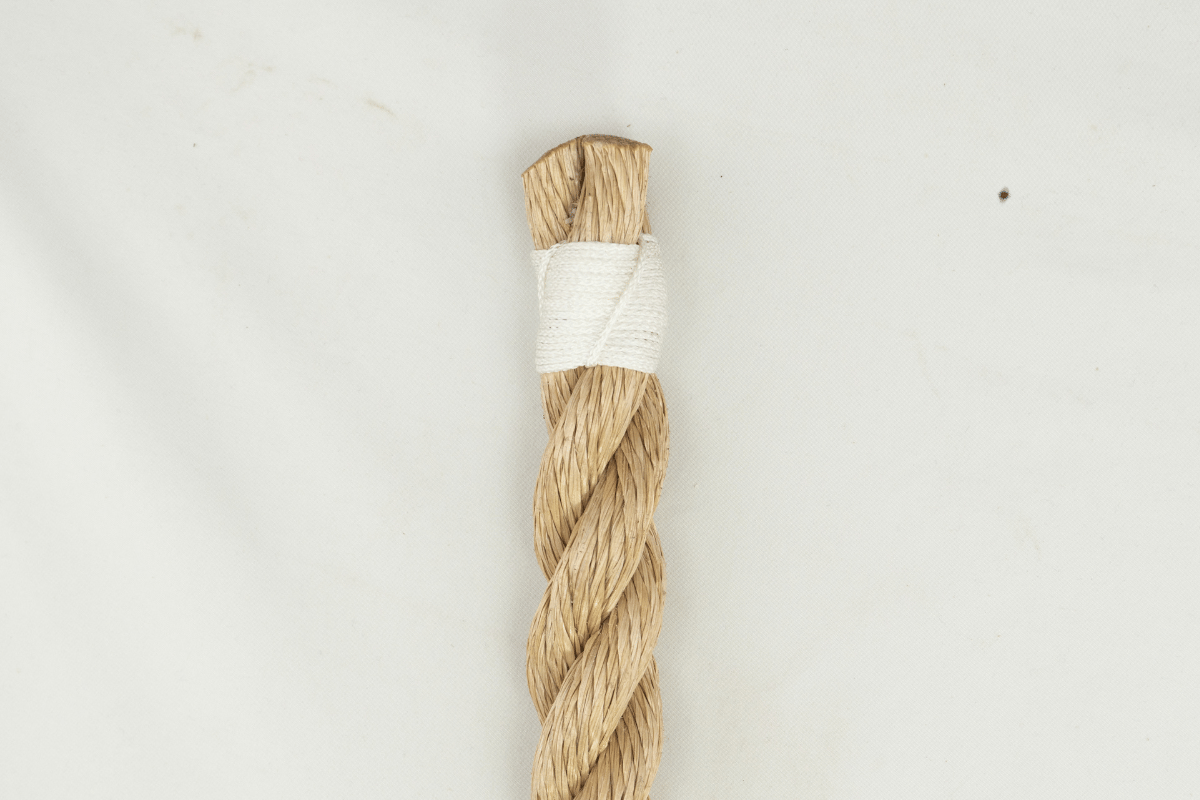
Rope Cutting FAQ
How do you cut rope without it fraying?
Make sure you tape a good sized area where you’ll be cutting, nice and tight. We find that electrical tape is the best because it has some stretch.
Can you cut rope with scissors?
For paracord and light rope, yes. For thick rope? You'll just ruin your scissors. Pruning or lopping shears are best.
Do I need a hot knife?
No, you can always melt a cut synthetic rope using any piece of hot metal, such as a pan. But if you cut synthetic rope often, a hot knife is not that expensive and totally worth it.
What’s the best way to cut manila rope?
Tape, saw, and whip or glue the ends.
Isn’t melting a synthetic rope on a pan a health hazard?
Metal isn’t very porous so it doesn’t absorb plastics. As long as it’s cleaned off (and not done frequently), it’s not considered a significant amount of plastic to pose any risk. Still, we don’t recommend using your nice cookware. Any piece of metal or old pan you don’t cook with will work just fine. Additionally, melting plastics on non-stick cookware can ruin the non-stick surface.
Why not melt rope ends with a lighter or other open flame?
While this can work if you’re cutting paracord at a campsite, it’s not ideal. An open flame, even a propane torch, tends to apply inconsistent levels of heat which can result in a messy chunky melt. An evenly heated metal surface will apply even heat every time, resulting in a clean looking end that won’t fray.
What kind of twine is best for whipping?
We use a diamond braid polyester twine for whipping, that comes in 13 different colors if you want to get fancy. Smaller ropes should be whipped with smaller diameter twine—check the guide on our whipping twine page for details.
Final Tips
- Always use fresh blades, dull cuts fray worse
- Don't over-melt synthetic ropes, they get brittle
- For showpieces like deck railings, finish ends with black heat-shrink tubing
Ready To Cut Rope Like a Pro?
If you have the right tools, cutting rope is pretty easy, whether you’re cutting a synthetic rope or a natural fiber.
Work smart, cut clean, seal the ends right, and your rope will last longer and look better—simple as that.
If you need high-quality synthetic or natural rope for your next project, or you're looking for braided rope, dock line, manila, or promanila, check out our full selection on RightRope.com. We cut rope right every day, and now you can too.






